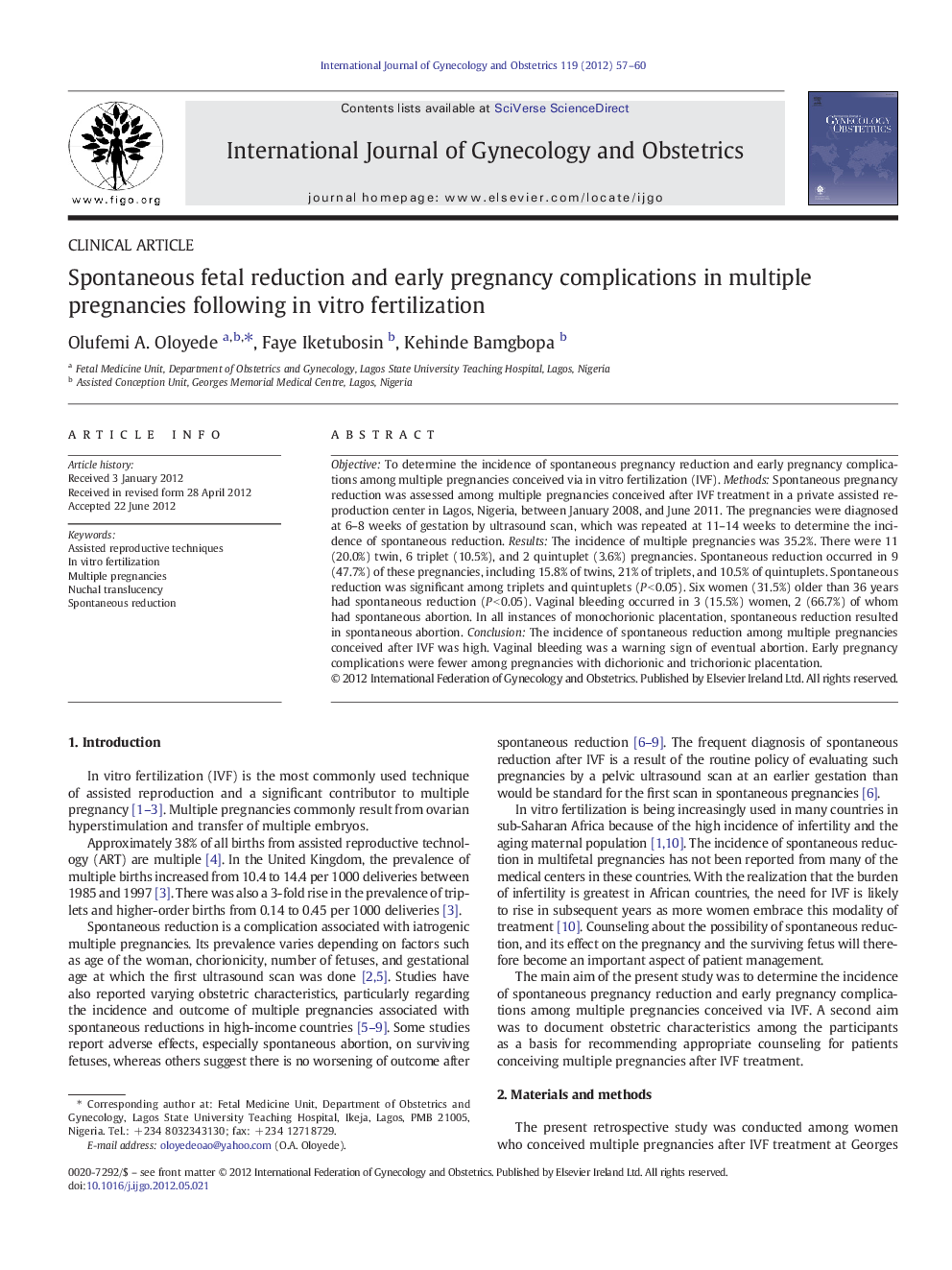| Article ID | Journal | Published Year | Pages | File Type |
|---|---|---|---|---|
| 3951222 | International Journal of Gynecology & Obstetrics | 2012 | 4 Pages |
ObjectiveTo determine the incidence of spontaneous pregnancy reduction and early pregnancy complications among multiple pregnancies conceived via in vitro fertilization (IVF).MethodsSpontaneous pregnancy reduction was assessed among multiple pregnancies conceived after IVF treatment in a private assisted reproduction center in Lagos, Nigeria, between January 2008, and June 2011. The pregnancies were diagnosed at 6–8 weeks of gestation by ultrasound scan, which was repeated at 11–14 weeks to determine the incidence of spontaneous reduction.ResultsThe incidence of multiple pregnancies was 35.2%. There were 11 (20.0%) twin, 6 triplet (10.5%), and 2 quintuplet (3.6%) pregnancies. Spontaneous reduction occurred in 9 (47.7%) of these pregnancies, including 15.8% of twins, 21% of triplets, and 10.5% of quintuplets. Spontaneous reduction was significant among triplets and quintuplets (P < 0.05). Six women (31.5%) older than 36 years had spontaneous reduction (P < 0.05). Vaginal bleeding occurred in 3 (15.5%) women, 2 (66.7%) of whom had spontaneous abortion. In all instances of monochorionic placentation, spontaneous reduction resulted in spontaneous abortion.ConclusionThe incidence of spontaneous reduction among multiple pregnancies conceived after IVF was high. Vaginal bleeding was a warning sign of eventual abortion. Early pregnancy complications were fewer among pregnancies with dichorionic and trichorionic placentation.
